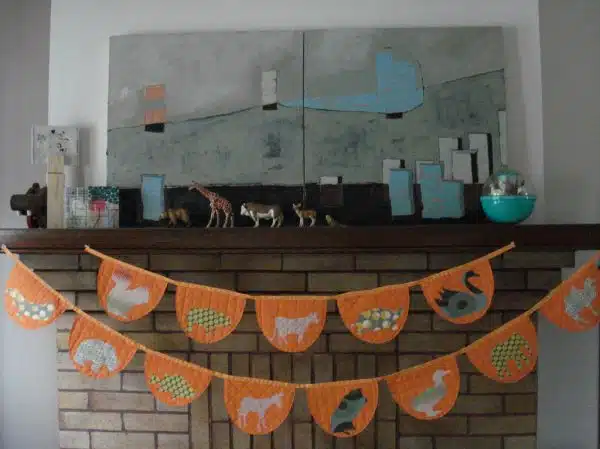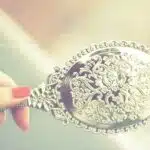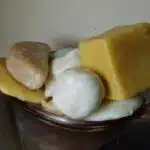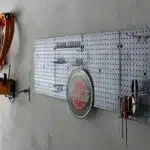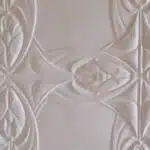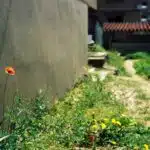Decorating for the holidays can be a fun and festive way to get into the spirit of the season. However, hanging garland can often lead to damage on walls and frustration for homeowners. Fortunately, there are several ways to hang garland without causing any harm to your walls.
One of the most popular methods is using removable hooks or adhesive strips specifically designed for wall decorations. These hooks and strips allow you to easily attach and remove garland without leaving any marks or residue on your walls. Other options include using suction cups or tension rods, which also provide a secure hold without damaging your walls. In this article, we will explore these methods in detail and provide tips on how to hang garland safely and effectively.
Understanding The Importance Of Wall Protection
It’s understandable to get excited about decorating your home for the holidays, but don’t let that excitement lead to damaged walls. Wall protection should be a top priority when it comes to DIY solutions for hanging decorations. Not only will this prevent costly repairs, but it will also ensure your home remains aesthetically pleasing.
Fortunately, there are many ways to protect your walls while still hanging garland. One option is adhesive hooks, which can hold up lightweight decorations without causing any damage to your walls. Another option is using removable mounting squares or strips. These products provide strong hold while also being easily removable without leaving residue or damaging paint.
In addition to protecting your walls from damage, taking the time to assess your wall type is important before hanging garland or other decorations. Different wall types require different hanging methods and materials, so understanding what you’re working with can save you time and frustration in the long run.
Assessing Your Wall Type
To hang garland without damaging your walls, you need to first assess the type of wall you have. Different wall types require different hanging options. The most common wall types for home decor are drywall, plaster, and brick.
For drywall walls, you can use adhesive hooks that are specifically designed for this type of surface. These hooks come in various sizes and weight capacities, so make sure you choose one that can support the weight of your garland. Another option is to use removable adhesive strips that are also designed for drywall surfaces. Be cautious when using nails or screws as they can cause damage to drywall.
If you have plaster walls, it’s best to use a picture hanging kit that includes special hooks and anchors. These kits can be found at any hardware store and are easy to install. If your garland is lightweight, you may be able to use adhesive strips as well.
If your walls are made of brick or concrete, use masonry screws or anchors with hooks. You’ll need a drill with a masonry bit to create pilot holes before screwing in the anchor. This option is sturdy but requires some effort during installation.
By assessing your wall type and selecting the appropriate hanging option, you can hang your garland safely without causing damage to your walls. In the next section, we’ll discuss how to choose the right garland for your wall decor needs.
Choosing The Right Garland For Your Wall
When choosing the right garland for your wall, it is important to consider the material options available. You want to ensure that the garland you select is durable and able to withstand the weight of being hung on your walls without causing damage. Some popular materials for garland include artificial pine, felt, and paper.
Decorating with garland in different spaces can also impact your choice of material. For example, if you plan on hanging garland outdoors or in a high-traffic area like a doorway, you may want to opt for a more sturdy material like plastic or wire. Meanwhile, if you are decorating a more intimate space like a bedroom or home office, you could choose a softer material like fabric or yarn.
Ultimately, the type of garland you select will depend on your personal style and the specific needs of your space. Take some time to browse through different options and think about how they will fit into the overall aesthetic of your home. With the right selection and proper installation technique, you can enjoy beautiful holiday decor without causing any damage to your walls.
When it comes to hanging garland without damaging your walls, using removable hooks for temporary decorations is an excellent solution. These hooks come in various sizes and strengths and are designed specifically for temporary use on surfaces like painted walls or wood paneling. In the next section, we will explore how to use these hooks effectively for hanging garland and other seasonal decor items in your home.
Using Removable Hooks For Temporary Decorations
- Removable hooks are a great way to hang decorations without having to damage walls or leave residue behind.
- Different types of removable hooks exist – some are adhesive and some are magnetic, with varying degrees of holding capacity.
- When installing removable hooks, it is important to make sure the surface is clean and dry in order to get a secure bond.
- When using removable hooks, it is best to use lightweight items. Heavy decorations can cause the hooks to come off the wall.
- Decorating with removable hooks is a great way to create a festive atmosphere without having to do any long-term damage to the walls.
- Popular decorations that can be used with removable hooks include garlands, bunting, fairy lights and paper lanterns.
Types Of Removable Hooks
Are you looking for a way to hang garland without damaging your walls? If so, using removable hooks is the perfect solution. However, not all removable hooks are created equal. In this article, we will discuss some of the best alternatives to traditional removable hooks that are both cost-effective and effective at holding up your decorations.
One of the most popular types of removable hooks is the adhesive strip hook. These hooks can hold up to a certain weight and are perfect for hanging lighter garlands or decorations. They also come in various sizes and shapes, making them versatile for different types of decor. Another option is suction cup hooks, which work well on smooth surfaces like glass or tile. These hooks can be reused multiple times and are great for hanging garlands around windows or mirrors.
For those who are looking for a more heavy-duty option, there are also command strips that can hold up to 16 pounds. These strips work similarly to adhesive strip hooks but have a stronger grip and can hold more weight. Additionally, magnetic hooks are another alternative that works well on metal surfaces like refrigerators or filing cabinets. Whatever type of removable hook you choose, make sure to read the instructions carefully before use and test them out with lighter items before hanging heavier decorations.
In conclusion, using removable hook alternatives is a great way to hang garland without damaging your walls. Adhesive strip hooks, suction cup hooks, command strips, and magnetic hooks are all cost-effective options that provide versatility in terms of size and weight capacity. With these options available, you can easily create a festive atmosphere in your home without worrying about leaving behind any damage when it’s time to take down the decorations.
Installation Tips
When it comes to decorating your home with temporary decorations, using removable hooks is a practical and convenient option. However, it’s important to ensure that the installation process is done correctly to avoid any damage to your walls or surfaces. To achieve this, you should consider using wall-friendly materials such as command strips or suction cups that won’t leave marks or residue.
Before installing the hooks, it’s essential to clean the surface thoroughly with a damp cloth and let it dry completely. This will ensure that the adhesive on the hook sticks properly and doesn’t come off easily. Additionally, creative hanging techniques can enhance the overall look of your decor. For example, instead of hanging garlands in a straight line, try draping them diagonally or creating a zigzag pattern for added visual interest.
When removing the hooks after use, follow the instructions carefully to avoid damaging your walls or surfaces. Don’t pull the hook off forcefully as it may cause paint chips or cracks. Instead, gently peel off the adhesive strip from one corner and pull slowly towards the opposite end while pressing down on the surface with your other hand. By following these installation tips, you can enjoy beautiful temporary decorations without worrying about damaging your walls or leaving behind stubborn residue.
Decoration Ideas
When it comes to decorating your home with temporary decorations, using removable hooks is a practical and convenient option. In addition to ensuring that the installation process is done correctly, it’s also essential to have creative decoration ideas that can enhance the overall look of your decor. One great decoration idea is creating a DIY wreath or holiday centerpiece that can be hung on the wall or displayed on a tabletop using removable hooks.
To create a DIY wreath, start by selecting your desired materials such as pine cones, evergreen branches, and berries. Next, use floral wire to attach the materials to a foam wreath form, creating a beautiful and festive decoration. Once completed, you can hang the wreath on your wall using removable hooks for an eye-catching display.
Another great decoration idea is creating a holiday centerpiece for your dining table or mantlepiece. Start by selecting seasonal elements such as candles, greenery, and ornaments. Use removable hooks to hang garlands around the perimeter of your table or mantlepiece and incorporate these elements into your design for an elegant touch. By following these decoration ideas along with proper installation techniques for removable hooks, you can transform your home into a beautiful and festive space during the holiday season.
Applying Adhesive Strips For Easy Removal
Applying adhesive strips is a popular option for hanging garlands without damaging walls. These strips are easy to use and remove, making them ideal for renters or those who frequently change their decor. However, it’s important to use alternative adhesives if you’re concerned about the strength of the strips or if they don’t stick to your walls.
One alternative adhesive option is double-sided tape. This type of tape can hold up heavier garlands, but it may leave residue on your walls when removed. To prevent adhesive residue, apply rubbing alcohol to the affected area and gently scrub with a cloth. Another alternative is liquid adhesive, which can be applied in small dots along the back of the garland. This method can provide added security and prevent sagging.
When using adhesive strips or other alternatives, it’s important to follow the manufacturer’s instructions carefully. Make sure your wall surface is clean and dry before applying any adhesive. Avoid placing heavy items on top of the garland as this can cause it to fall off over time. And remember that these adhesives are designed for temporary use only.
Transition: While adhesive strips are a great option for hanging garlands, they may not provide enough support in certain situations. If you’re looking for added security, consider using suction cups instead.
Using Suction Cups For Added Security
To add an extra layer of security to your garland installation, consider using suction cups. These handy little devices can be attached to windows or other smooth surfaces to provide additional support for your garland. They are particularly useful in areas where you want to maximize the length of your garland without resorting to heavy-duty hardware.
There are many different types of suction cup alternatives available on the market today. Some are designed specifically for use with garlands and other decorative items, while others are more general-purpose. When choosing a suction cup alternative, it is important to consider factors such as the weight of your garland, the size of the surface you plan to attach it to, and how long you need it to stay in place.
Using suction cups is a great way to achieve maximum flexibility when hanging garlands. By attaching them strategically along your wall or window, you can create a customized look that fits perfectly with your decor. Moreover, they offer added security and stability by preventing the garland from sagging or falling off altogether. In our next section, we’ll explore another versatile option for hanging garlands: utilizing tension rods.
Utilizing Tension Rods For Versatility
Tension rods are versatile and can be used for a variety of purposes, including hanging garland without damaging your walls. These rods come in different sizes and can be easily adjusted to fit any space. They work by using the tension between two surfaces to hold themselves in place, eliminating the need for nails or screws.
To use tension rods for hanging garland, simply follow these steps:
- Choose a tension rod that fits the width of your space.
- Adjust the tension by twisting the rod until it’s snug against both sides of the wall.
- Hang your garland on the rod, adjusting as needed for a perfect fit.
While tension rods are a great option for hanging garland, there are also alternative materials you can use. For example, adhesive hooks and clips are another easy way to hang decorations without leaving permanent marks on your walls. Just make sure to choose a weight limit that’s appropriate for your garland and follow manufacturer instructions carefully.
Next up: measuring and cutting garland for best fit!
Measuring And Cutting Garland For Best Fit
- Accurately measuring the length of the wall is the first step when hanging garland for best fit.
- Once the length is determined, it is necessary to cut the garland to the appropriate size.
- Utilizing a ruler and a pair of scissors, the garland should be cut in a straight line.
- After the garland has been cut, the ends should be secured to prevent the garland from unraveling.
- A variety of materials can be used to secure the ends, such as twist ties, tape, or twine.
- Without properly measuring, cutting, and securing the garland, it can cause damage to the walls when hung.
Measure Length Of Wall
As you’re planning to decorate your home with garlands, measuring the length of the wall is an important step to ensure that you cut the garland in the right size. You can use different measuring tools depending on what you have at hand and what works best for you. A measuring tape is one of the most common tools used by DIY enthusiasts for measuring walls, but if you don’t have one, a simple ruler or yardstick can do the job.
When using a measuring tape, start at one corner of the wall and measure all the way to the other end. It’s recommended to measure twice to avoid any errors before cutting your garland. If your wall has any obstacles such as windows or door frames, make sure to take those measurements into consideration as well. Alternatively, if you’re using a ruler or yardstick, simply measure from one end of the wall to another while taking note of any obstacles that may come in between.
Another DIY measuring technique that might be helpful is using your own body as a reference point. If you have no tools at hand, simply stand next to the wall and estimate how many times your body length will fit into it. This method may not be as accurate as using measuring tools but it can give you an approximate measurement so that you know how much garland material you need. Whatever technique you choose, make sure to double-check before cutting your garland so that it fits perfectly without damaging your walls.
By following these simple DIY measuring techniques and using proper measuring tools, you can easily measure the length of your walls without causing any damage. With accurate measurements in hand, cutting your garland will be a breeze and decorating your home will be stress-free this holiday season!
Cut Garland To Size
After measuring the length of your walls, the next step is to cut the garland to size. Garlands come in different lengths and thicknesses, so you need to choose one that fits your decor style. If you’re going for a minimalist look, thinner garlands may be more suitable, while thicker ones work well for a more traditional or rustic feel.
When cutting the garland, it’s important to use proper techniques to avoid damaging it. One popular method is using scissors or wire cutters to snip the stems at an angle. This helps prevent frayed edges and ensures a clean cut. Another technique is using pruning shears, which are designed specifically for cutting greenery and can make quick work of even thick branches.
If you’re using multiple garlands to decorate your home, make sure they all match in length. To achieve this, measure each garland before cutting and adjust as necessary. Once you’ve cut the garlands to size, you can start decorating your home! Whether you’re draping them along staircases or hanging them on mantels, properly measured and cut garlands will add a festive touch to any room.
Secure Ends
Now that you have measured and cut your garland to the desired length, the next step is to secure its ends. Garland attachment is a crucial step because it ensures that the garland remains in place and prevents it from falling off or damaging your walls. There are various methods of securing garland ends, depending on where you want to hang them.
One way to attach garlands is by using hooks or nails. However, this method requires drilling holes in the wall, which may not be feasible for some people, especially those living in rental properties. An alternative option is using adhesive hooks or clips. These are easy to install and remove without leaving any marks on your walls. Additionally, they come in different sizes and strengths, so you can choose one that matches the weight of your garland.
While attaching your garland, it’s important to consider wall safety. Avoid using sharp objects that can damage your walls or cause injuries while installing or removing them. Also, make sure that the attachments are secure enough to hold the weight of your garland without falling off unexpectedly. By following these tips for securing your garland ends, you can decorate your home safely and beautifully this holiday season!
Creating A Balanced Look With Symmetry
The key to creating a visually pleasing home decor is balance. Symmetrical designs are one way to achieve this balance. This design involves mirroring objects or furniture on either side of an imaginary central line. A symmetrical arrangement is easy to achieve and provides a sense of orderliness.
Asymmetrical designs, on the other hand, may seem chaotic at first glance, but they are often more interesting and dynamic. This design involves placing objects of different sizes and shapes in a way that creates balance through contrast. Asymmetry can be used to draw attention to an area or object in your home decor.
When it comes to decorating your home with garland, both symmetrical and asymmetrical designs can work well. A symmetrical design could involve hanging garland in equal lengths on either side of a fireplace or doorway. An asymmetrical design could involve draping garland unevenly over a mantel or around a staircase banister. Experiment with both designs to find what works best for your space.
Transition: Now that you have learned about creating balanced looks with symmetry and asymmetry, let’s add some sparkle by incorporating lights into your garland decoration.
Adding Lights To Your Garland For Extra Sparkle
- When choosing the right lights for your garland, consider the overall look you are trying to achieve, as well as the type of wall surface you are working with.
- Installing lights on the garland requires a steady hand and patience. Carefully thread the lights through the garland, making sure to evenly distribute the number of lights throughout.
- If you are looking to add extra sparkle to your garland, consider adding a twinkle effect with a twinkle light strand.
- When hanging the garland, take your time and be mindful of the wall surface. If you are hanging the garland on drywall, use wall anchors to secure the garland in place.
- For a tile or brick surface, use a drill and masonry drill bits to install the anchors.
- When drilling, make sure to wear eye protection and carefully position the drill to avoid damaging the wall surface.
Choosing The Right Lights
To add extra sparkle to your garland, consider adding lights. However, it’s important to choose the right lights for your garland to avoid damaging your walls. When selecting lights for your garland, consider the types of bulbs you want to use. LED lights are a great option as they are energy-efficient and emit less heat compared to traditional incandescent bulbs. Additionally, LED bulbs come in a variety of colors and sizes, allowing you to customize the look of your garland.
Another factor to consider when adding lights to your garland is its length. To ensure that you have enough lights for your garland, measure its length beforehand and purchase enough strands of lights accordingly. You don’t want to run out of lights halfway through decorating your garland! It’s also important to keep in mind that different types of bulbs may require different lengths of strand. For example, if you’re using larger bulbs, you may need a longer strand of lights.
When it comes to hanging the lights on your garland, be sure to use clips or hooks designed specifically for holiday decorations. This will help prevent damage to your walls and ensure that the lights stay securely in place throughout the holiday season. By choosing the right type of bulbs and ensuring that you have enough strands for your garland’s length, you can create a beautiful and festive decoration without damaging your walls in the process.
Installing Lights On The Garland
Garland lighting ideas can add a festive touch to your home during the holiday season. However, installing lights on your garland can be a daunting task, especially if you’re doing it for the first time. In this article, we will discuss some DIY garland light installation tips that will help you create a beautiful and safe holiday decoration.
Before installing lights on your garland, it’s essential to make sure that the lights are in good condition and working correctly. Check each bulb for damage and replace any broken or burnt-out bulbs before starting. Next, measure the length of your garland and determine how many strands of lights you will need. It’s advisable to use LED lights as they are energy-efficient and emit less heat than traditional incandescent bulbs.
When it comes to installing lights on your garland, start at one end and work your way along the entire length of the garland. Use clips or hooks designed specifically for holiday decorations to attach the lights securely to the garland. Be careful not to pull too hard on the wires as this can damage the bulbs or cause them to break. Once all the lights are installed, plug them into an outlet and check that they are working correctly.
In conclusion, adding lights to your garland is an excellent way to add some extra sparkle to your home during the holidays. By following these DIY garland light installation tips, you can create a beautiful decoration without damaging your walls or risking injury. Remember always to check that your lights are in good condition before starting and use clips or hooks designed for holiday decorations when installing them on your garland.
Adding Twinkle Effects
To add more visual interest to your garland lighting, consider incorporating twinkle effects. Twinkle lights are small bulbs that flicker on and off randomly, creating a sparkling, magical effect. To achieve this look, you can mix in strings of twinkle lights with regular ones or purchase pre-lit garlands that include twinkle lights.
When it comes to twinkle light placement, there are a few things to keep in mind. To avoid overdoing it, limit the number of twinkle light strings to one or two per garland. You can place them strategically throughout the garland to create an even distribution of sparkle. Another tip is to use warm white or gold-colored twinkle lights for a cozy and sophisticated look that complements the natural greenery of the garland.
Finally, consider coordinating your garland color scheme with your overall holiday decor. For example, if you have red and gold ornaments on your Christmas tree, choose a garland with similar colors or add pops of red and gold accents throughout the greenery. By doing so, you create a cohesive and polished look that ties everything together nicely. With these tips in mind, adding twinkle effects to your garland lighting is sure to elevate your holiday decor game.
Incorporating Other Decorative Elements
To add even more depth and character to your garland, consider incorporating other decorative elements. Using greenery accents, like pinecones or holly leaves, can give your garland a natural and festive look. Not only will this add texture and dimension, but it can also help tie in the overall theme of your holiday decor.
Another way to jazz up your garland is by incorporating ribbon accents. This can be done by wrapping ribbon around the garland itself or by adding bows throughout. The possibilities are endless; you can choose a bold color to make a statement or stick with a classic gold or silver for a timeless look.
Remember to not overcrowd your garland with too many additions. Keep it simple and let each element shine on its own. By using greenery accents and ribbon accents sparingly, you can create an elegant and cohesive look that complements your existing holiday decor.
As you prepare to take down your festive decorations at the end of the season, it’s important to do so carefully to avoid damaging your walls. In the next section, we’ll discuss how to remove garland without leaving any marks or residue behind.
Removing Garland Without Damage
When choosing an adhesive to hang garland without damaging walls, consider the weight of the garland, the surface of the walls, and the amount of time needed for the adhesive to set. To test techniques for removing garland without damage, use a small sample piece of garland to test different types of adhesive and techniques on a sample surface. Different adhesive techniques may create different levels of damage, so be sure to use the most effective and least damaging adhesive possible. Additionally, always keep in mind the weight of the garland, the surface of the walls, and the amount of time needed for the adhesive to set when choosing the best adhesive for the job.
Choosing Adhesive
As the holiday season approaches, many people are excited to decorate their homes with festive garlands. However, hanging garland can be a daunting task that can damage your walls if not done correctly. The key to removing garland without causing any harm is choosing the right adhesive for your needs.
There are several types of adhesives that you can use to hang garland, each with its own pros and cons. One option is double-sided tape, which is easy to apply and remove without leaving any residue behind. However, it may not be strong enough to hold heavy or bulky garlands. Another option is removable mounting putty, which can hold up heavier garlands but may leave behind oily stains on your walls.
For a stronger hold, you could consider using removable hooks or clips. These come in various sizes and strengths and can accommodate different types of garlands. However, they may leave small holes in your walls when removed. It’s essential to choose an adhesive that matches the weight of your garland and the surface you’re attaching it to.
In conclusion, choosing the right adhesive for removing garland without damage requires careful consideration of the types of adhesives available and their pros and cons. Whether you opt for double-sided tape, removable mounting putty, or hooks/clips, make sure you select an adhesive that fits your needs and won’t harm your walls when removed. By taking these steps, you can enjoy beautiful holiday decorations without worrying about causing any damage to your home’s interior surfaces.
Testing Techniques
As we continue our discussion on removing garland without damage, it’s important to consider testing techniques that can help protect your walls from any potential harm. Before hanging garland, it’s recommended that you test your chosen adhesive on a small, inconspicuous area of the wall to ensure that it won’t cause any damage or leave residue behind. This will also give you an idea of how strong the adhesive is and whether it can hold the weight of your desired decorative options.
Testing techniques are especially important if you’re using a new type of adhesive or trying out a different brand. It’s always better to be safe than sorry when it comes to protecting your walls from damage. Another testing technique is to hang a small piece of the garland with the adhesive and let it sit for at least 24 hours before adding more weight. This will give you an idea of how well the adhesive is holding up and whether adjustments need to be made before adding heavier decorations.
By incorporating these testing techniques into your process of removing garland without damage, you can ensure that your walls stay protected while still being able to enjoy festive decorations during the holiday season. Keep in mind that wall protection should always be a top priority when decorating, and taking these steps will make sure that any harm caused by adhesives is minimized as much as possible.
Repairing Any Wall Damage
Wall repair techniques are essential when it comes to maintaining the integrity of your walls. It is understandable that you may inadvertently cause damage while hanging garland or other decorations. However, repairing any wall damage is not as difficult as it may seem. With some basic DIY wall maintenance skills and a few tools, you can fix small holes and cracks in no time.
One common technique for repairing small holes involves using spackling paste or putty. Simply apply a small amount of the paste to the hole and smooth it out with a putty knife. Once it dries, sand the area until it is flush with the surrounding wall surface. For larger holes, you may need to use a drywall patch kit. These kits come with everything you need to cover larger areas, including mesh tape and joint compound.
Another important aspect of wall repair is matching the paint color and texture of the surrounding area. This can be achieved by taking a sample of the existing paint to your local hardware store for color matching. You can also add texture to the patched area using a stippling brush or sponge to blend it in with the rest of the wall.
Now that you know how to repair any wall damage caused by hanging garland, you can enjoy your festive decorations worry-free! In our next section, we will discuss tips for storing your garland so that it stays in good condition for years to come.
Tips For Storing Your Garland
When selecting a storage space for garland, it is important to consider the size and type of material of the garland, as well as the climate and available space in your home. Care should be taken to wrap the garland in an acid-free tissue paper or plastic sheeting, to ensure its longevity and the prevention of discoloration from environmental factors. To secure the wrapped garland, it is recommended to use a sturdy box with a lid, or a plastic storage bin, to minimize any potential damage.
Choosing The Right Storage Space
Maximizing space is crucial when it comes to storing your garland. Choosing the right storage space will ensure that your garland stays in good condition for future use. You want to avoid any damage to your garland, so it’s important to consider the storage location carefully.
One of the best organization tips for storing your garland is to use a designated container or bag. This will keep your garland organized and protected from dust and other debris. A clear plastic container with a lid is a great choice because you can easily see what’s inside without having to open it up. You can also label the container with the type of garland or where it was used so that you can easily find it next year.
When choosing a storage location, make sure it’s dry and out of direct sunlight. Moisture can cause mold or mildew to grow on your garland, and sunlight can fade the colors over time. A closet or attic is a good option for long-term storage, as long as there isn’t too much humidity. If you don’t have room in your home for large containers, consider using vacuum-sealed bags to compress your garland down for easier storage.
By following these tips, you’ll be able to store your garland safely and efficiently without damaging your walls or other surfaces in your home. Maximizing space and using organization tips will help you keep all of your holiday decorations tidy and ready for use next year.
Wrapping The Garland
Now that you have learned some tips for storing your garland, let’s discuss the important task of wrapping it properly. Garland wrapping techniques are critical to ensure that your garland looks great when you take it out of storage next year. A well-wrapped garland will save you time and effort in the long run.
One creative garland arrangement is to wrap it around a hanger. This method works best for lightweight garlands, such as faux pine needles or tinsel. Simply drape the garland over a hanger and secure it in place with twist ties or string. Be sure to wrap any delicate ornaments in tissue paper before hanging your garland to avoid damage.
For heavier or larger garlands, consider using a cardboard tube or PVC pipe to wrap them around. This method will help keep the shape of the garland intact and prevent any tangling. Wrap the garland around the tube or pipe, securing it every few feet with twist ties or string. You can then store these tubes in a designated container alongside your other decorations.
In conclusion, proper wrapping techniques are just as important as choosing the right storage location for your garland. By taking care when wrapping and storing your holiday decorations, you can ensure that they remain in good condition for years to come. With these tips at hand, you’ll be able to enjoy beautiful and organized holiday decorations every year!
Securing The Garland
Now that you’ve learned about effective garland wrapping techniques, let’s talk about how to properly secure your garland before storing it. One important factor to consider is the weight of your garland. Lightweight garlands can be secured using twist ties or string, but heavier ones may require stronger materials.
For heavier garlands, consider using alternative materials such as zip ties or bungee cords to secure them in place. These materials can provide extra support and prevent the garland from slipping or falling during storage. Be sure to wrap any delicate ornaments in tissue paper before securing the garland to avoid damage.
When securing your garland, it’s important to take into account its length and shape. For longer garlands, consider dividing them into sections and securing each section individually. This will help prevent tangling and make it easier to unwrap next year. Additionally, be mindful of any sharp edges on your storage containers that could potentially damage the garland. By taking these precautions, you can ensure that your holiday decorations stay in top condition for many seasons to come.
Conclusion: Enjoying Your Festive Decorations Without Worrying About Wall Damage
After following the steps above, you can now hang your garland without worrying about damaging your walls. However, accidents may still happen and you might find yourself with a few scratches or dents on your walls. But fret not, there are DIY repair techniques that can easily fix these damages. For small scratches, use a putty knife to apply spackle over the area and let it dry before sanding it down and repainting. Larger damages may require some patching and painting, but with a little effort and patience, your wall will look as good as new.
If you want to avoid any potential damage to your walls altogether, consider alternative decoration options. There are plenty of creative ways to decorate for the holidays without using nails or screws. Command hooks are a popular solution that can hold up decorations without leaving any marks on the wall. You can also use removable adhesive strips or suction cups for lightweight decorations such as wreaths or stockings.
In summary, hanging garland without damaging walls is possible with proper preparation and tools. However, accidents may still occur which can be remedied through DIY repair techniques. For those who want to avoid any damage altogether, alternative decoration options such as command hooks or suction cups are great alternatives. By using these methods, you can enjoy decorating for the holidays without having to worry about causing any harm to your home’s interior walls.
Conclusion
The importance of wall protection cannot be overstated. It is crucial to assess your wall type and choose the right garland to ensure that no damage occurs during decoration. Using removable hooks or adhesive strips for easy removal can help prevent any harm to your walls.
When it comes time to remove the garland, doing so carefully can also reduce damage. Repairing any damage before storing the garland is essential for future use. Like a skilled surgeon, taking great care in removing decorations from walls is vital in maintaining the integrity of your home.
In conclusion, decorating your home with festive garlands need not cause damage to your walls. Assessing wall types, choosing appropriate garlands, using removable hooks or adhesive strips and careful removal are all important steps toward protecting your walls. Storing garlands properly will ensure they remain in good condition for future use. Like a well-trained professional, taking these precautions will allow you to enjoy your holiday decor without causing any lasting damage to your home.
Image Credits
- “Birthday Garland” by hownowdesign (featured)

